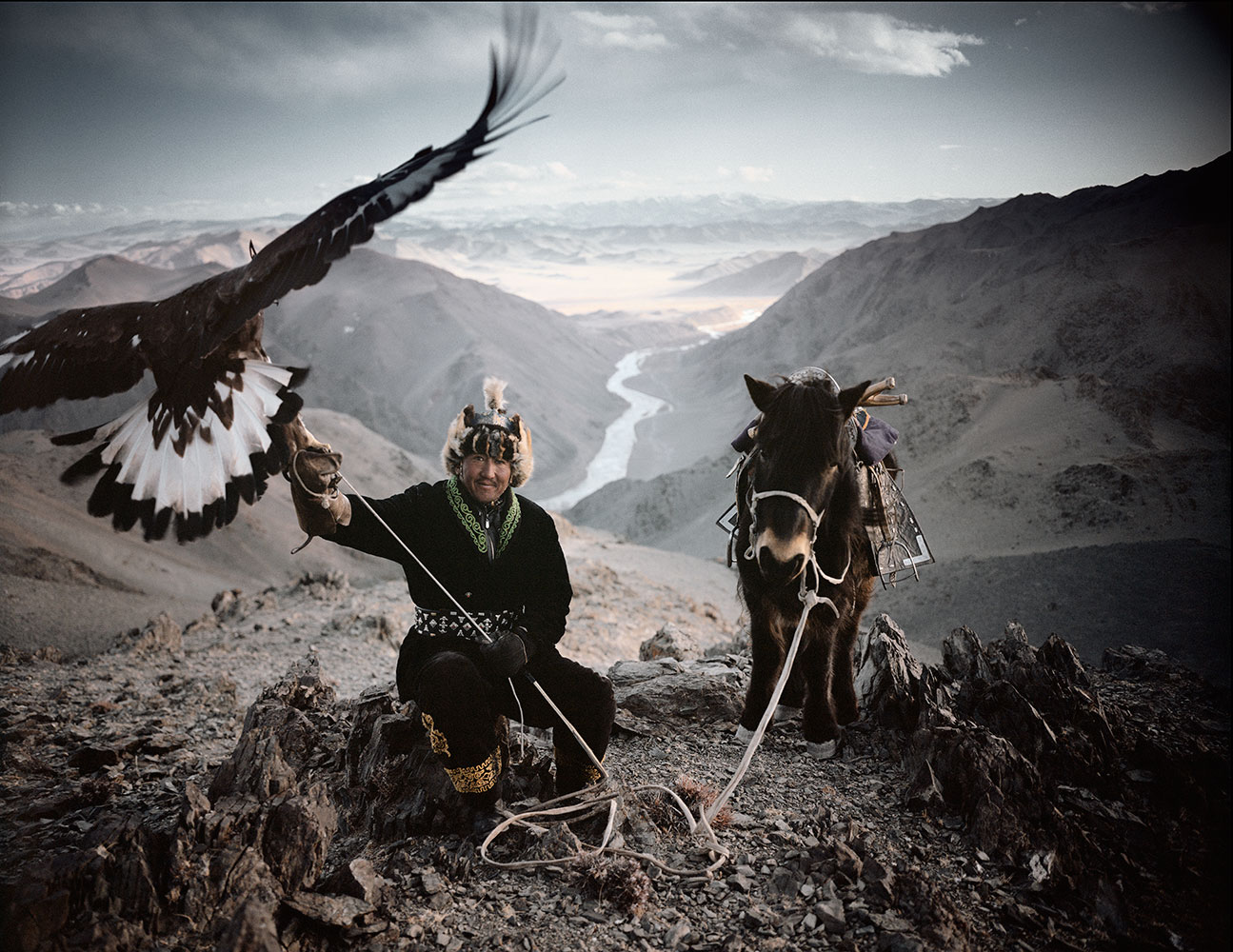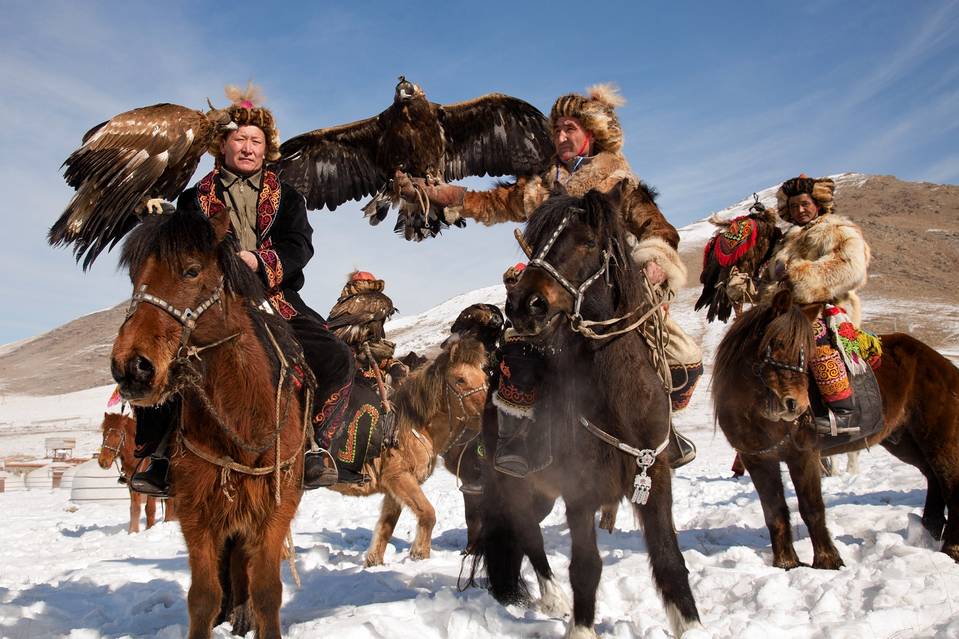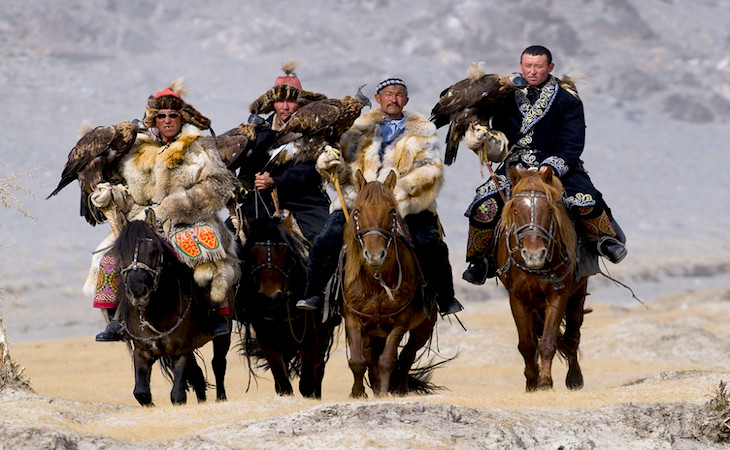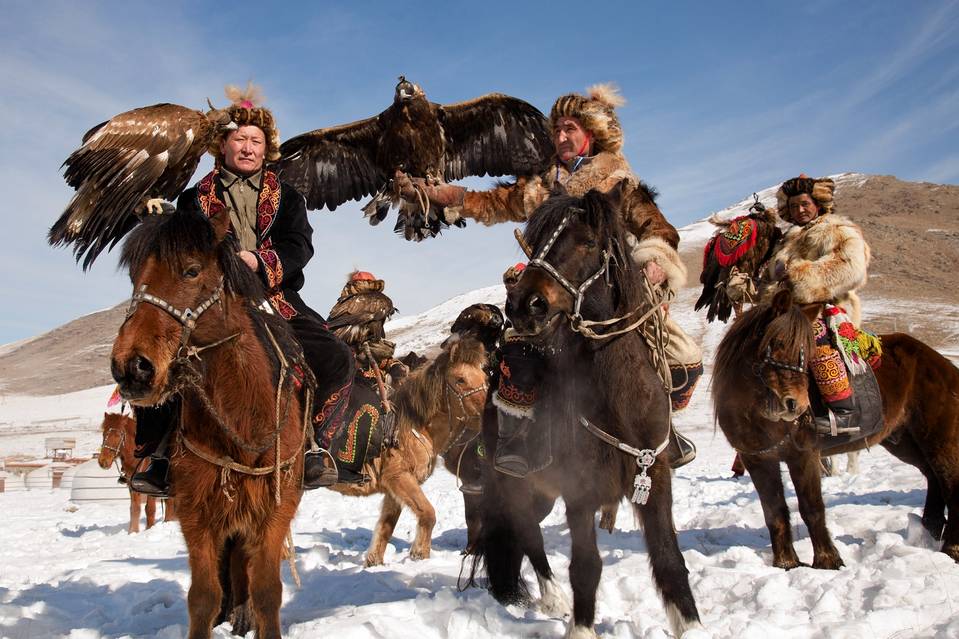It’s believed that the Kazakhs are skilled horsemen who migrated from their original territory in the northern part of Central Asia to the western regions of China in the 12th century. Aside from China, large communities are also found today in Mongolia, Kazakhstan, Uzbekistan, and Russia. The majority of the 1.5 million Kazakh people in China occupy Xinjiang – a vast desert and mountainous region in the northwest, which was part of the ancient Silk Road trade route that linked China with the Middle East.
Culture and Customs

JIMMY NELSON
Kazakhs who share close blood ties from a clan called awul, and their elders and chief are called awulbas. Kazakh society is patriarchal, so property ownership is passed down only to the men, who are also the head of the household and have full authority over the home and all family matters. The Kazakhs practice monogamy, although community chiefs are known to be polygamous. The elderly are highly respected in Kazakh community; they are always seated first at a table and are served the best meat and drinks at ceremonies.
Horses are an important part of the Kazakh culture, and horse racing is their favorite sport.
Beliefs and Spirituality

graphics.wsj.com
The Kazakhs are mostly Muslims, and many of their festivals and ceremonies are related to their religion. However, they also have practices and beliefs that originate from their centuries-old nomadic lifestyle. For instance, the Kazakhs will not go out on Tuesday and Friday, as they consider these two days inauspicious. They also have a high regard for the numeral seven, which has great social significance. This is apparent in the naming ceremony of a newborn which is held seven days after the birth, and in the living arrangement where two families related by marriage must be separated by seven rivers.
Celebrations and Ceremonies

events.ncfta.gov.tw
The grandest festival of the year for the Kazakh people is their New Year called Nauryz, which coincides with the first month of the lunar calendar. The festival is celebrated with their traditional kuji dish, which consists of mutton, milk dough, wheat, and barley. As Muslims, the Kazakhs also celebrate Eid-ul-Fitr, the Islamic festival that marks the end of holy month of fasting.
Many are also skilled in the performance of Kazakh traditional songs. One of the most commonly used traditional musical instruments of the Kazakhs is the dombra, a plucked lute with two strings. It is often used to accompany solo or group singing. Another popular instrument is kobyz, a bow instrument played on the knees.
Traditional Fare
The Kazakhs are found of stewed mutton. Fermented horse milk, which resembles wine, is favorite beverage of the Kazakh people during spring and summer, while milk dough and cheese from their staple food. Traditional Kazakh cuisine revolves around lamb and horse meat, as well as a variety of dairy milk products. For hundreds of years, Kazakhs were herders who raised fat-tailed sheep, Bactrian camels, and horses, relying on these animals for transportation, clothing, and food. The cooking techniques and major ingredients have been strongly influenced by the nation’s nomadic way of life.
The Kazakhs are known for their remarkable needlework and embroidery; their products are exported to international trade markets.
Falconry is an old Kazakh tradition, and although the golden eagle is the favored bird of prey for hunting and detecting intruders, falcons and hawks are also used for these purposes.
Traditional Attire

Horse Breeds Information & Pictures
Loose, durable clothing is the order of the day, as the routine wear of the Kazakh people is primarily suited to horseback riding which forms a major part of their lives. Dark colored cotton, fleece, and gabardine are the common fabric used for the men’s attire, where baggy trousers are usually paired with long-sleeved shirts with embroidered borders. During winter, the men don fur coats and chaparajos made of sheepskin. Red dresses with cloth leggings and fitted waistcoats with silver coins and ornaments are the traditional attire for Kazakh women, who also use shawls and hats during special occasions.
Kazakh people live in portable tents covered in animal skin or felt. These are called yurt and are highly conducive to the Kazakh nomadic lifestyle.
Language
The Kazakh people speak a Turkic language belonging to the Ural-Altaic language family. In China, Kazakh writing, which encompasses the Arabic alphabet, is still in use today, although a new Romanized script evolved after the establishment of the People’s Republic of China.







